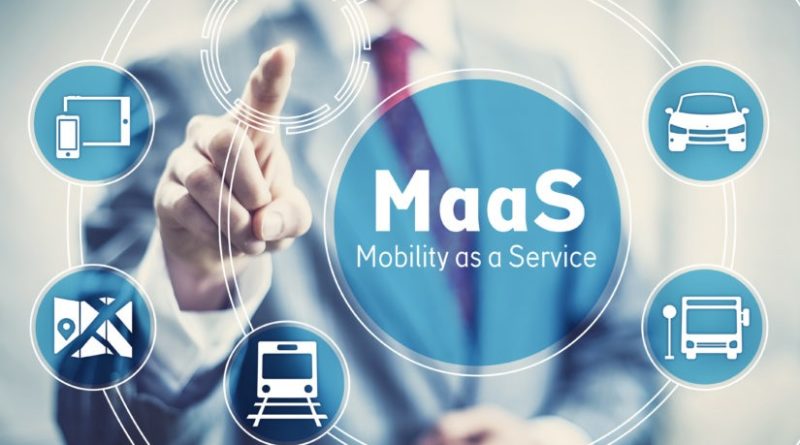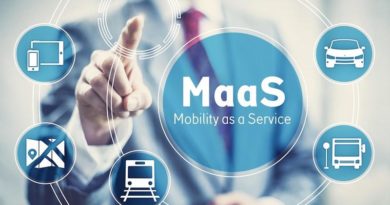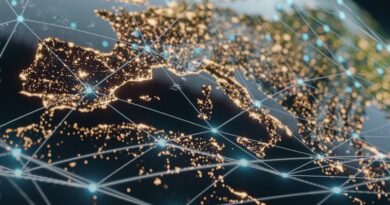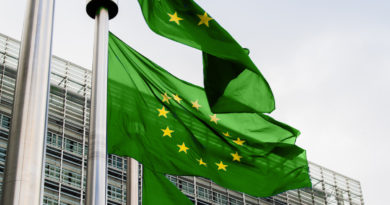
Towards safe, convenient, affordable and environmentally friendly mobility in Europe
3.2 billion kilometres that’s the distance Germans travel everyday. A distance of 39 kilometres per person.
The situation in other EU countries is comparable. There too, people drive many kilometres every day for work, shopping or sports. Delivery services bring pizzas or parcels.
Trucks provide businesses with necessary supplies. The journeys, however, are not only national ones. Workers commute across borders and families travel south on holiday. French people order products from Poland and vice versa. Trucks, cars, trains, ships, and planes are permanently crossing our continent.
The whole of Europe is on the move but this mobility is gradually reaching its limits.
Anyone in doubt need only turn on their radio: Traffic jams reports are getting longer. Accidents seem to be happening more often. Trains are running late and there are endless queues at the airports.
All of this costs time, money, energy and nerves. This is complicated by the fact that all forecasts predict that traffic will increase even further. Even more people want to travel, even more goods need to be delivered.
It is our responsibility to make this mobility possible in the future while ensuring that it is safe, convenient, affordable and environmentally friendly.
It is a challenge; but we have everything at hand to tackle it. Technological progress will bring cars that need less fuel and hopefully produce zero emissions soon.
It helps that trains will consume less energy, planes less jet fuel, that ship engines will get cleaner and that air taxis will, quite possibly, soon be an everyday sight.
But some of these developments will take time. More time than we have. This is why it is great that one thing speeds up these matters massively the digital revolution.
Going digital makes an entirely new type of mobility possible much more flexible and environmentally friendly than, for instance, a car could ever be.
Mobility without the problem of searching for a parking place or a filling station. Digitalisation interlinks different transport modes and offers tailored solutions for individual users.
It provides solutions not only for passengers but also for freight transport. With its help, goods can be picked up, loaded and delivered in a tailor-made manner.
The objective must be to integrate all transport modes using their advantages and interlink them when it makes sense.
Thereby, we can make the whole transport system more efficient and environmentally friendly.
This becomes clear in the project of shifting more traffic from roads to railways.
In Germany, we would like to double the number of railway users by 2030. This applies to long-distance, freight and local services. To this end, we are expanding the network in a targeted manner and remove bottlenecks.
We are promoting combined transport and gradually equipping lines with the European ETCS signalling system.
With this measure alone, 20 percent more trains can operate. We also need modern technology across borders.
It is not acceptable that a train from the port of Hamburg to Genoa needs a new locomotive at both the Swiss and the Italian borders because it is unable to process the signalling technology of three different countries.
With all of these measures we are making it easier to switch to rail. All of Europe benefits from this, because Germany is a transit country.
The enormous potential of digitalisation and connectivity also becomes clear in city centres. Here, the problems are most serious.
All over Europe, cities have to face the same challenges: too many distribution operations and commuters, a lack of parking spaces and poor air quality.
There are many approaches to relieve the pressure on roads.
One example is local public transport. Apps make it possible to find out departure times, routes and charges with only a few clicks.
Thanks to new schemes including electric scooters or car sharing services, buses, trams and underground trains can be perfectly interlinked with other means of transport.
The more convenient local public transport is, the easier it is to leave your own car at home.
Another example is distribution. Journeys can be optimised and coordinated digitally.
It is hard to understand why one address in the city centre is served by different parcel services up to five times a day instead of combining these operations.
Finally, there is the car. More than half of all citizens claim that they would never give up their car. A third say that it is “very difficult to imagine”. So what can a car – besides clean drivetrains – contribute to modern mobility? A lot!
First of all, there is automated and connected driving. This will significantly reduce the number of accidents. Cars and trucks will warn each other of congestion or black ice.
With the help of artificial intelligence, and better than a human driver, cars and trucks will predict what other road users will do next. And they will react more quickly. Also, they will be more environmentally friendly since they will make a smooth flow of traffic possible.
Germany is a pioneer in the field of automated and connected driving. We set up the first digital test beds, on which businesses can test their innovations; even across borders together with France and Luxembourg. It is obvious that automated and connected driving cannot stop at national borders.
Europe must cooperate closely.
But it is also obvious that if, in the future, everybody simply replaces their former car with a highly automated one, this would not bring much benefit.
We must reduce the number of vehicles with only one passenger. Digitalisation makes it possible. We are promoting pilot projects in which different users’ journey requests are dovetailed.
Such ride sharing and on demand services offer new opportunities for practical and affordable mobility.
All of this shows that technological progress, digital solutions and smart connectivity will enable us to cope with the growing flows of traffic.
The wish for safe, connected and clean mobility is not for the distant future. It is possible. And we will enjoy it!




